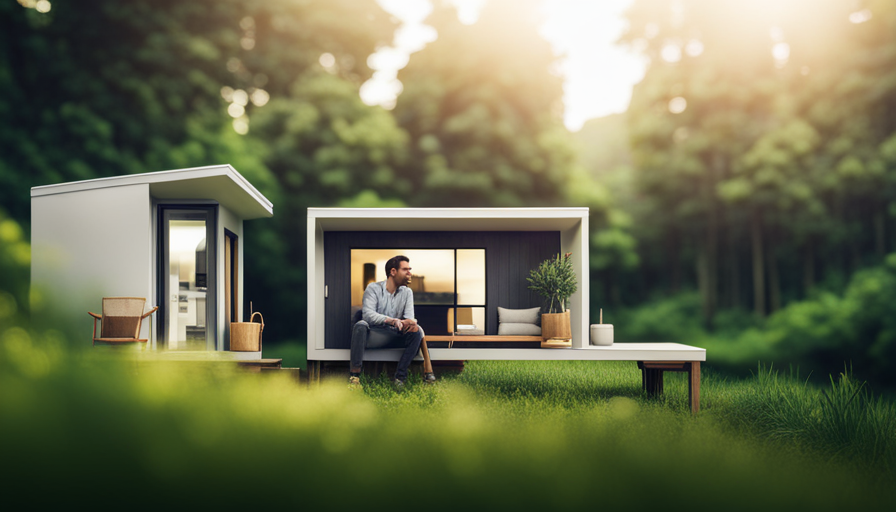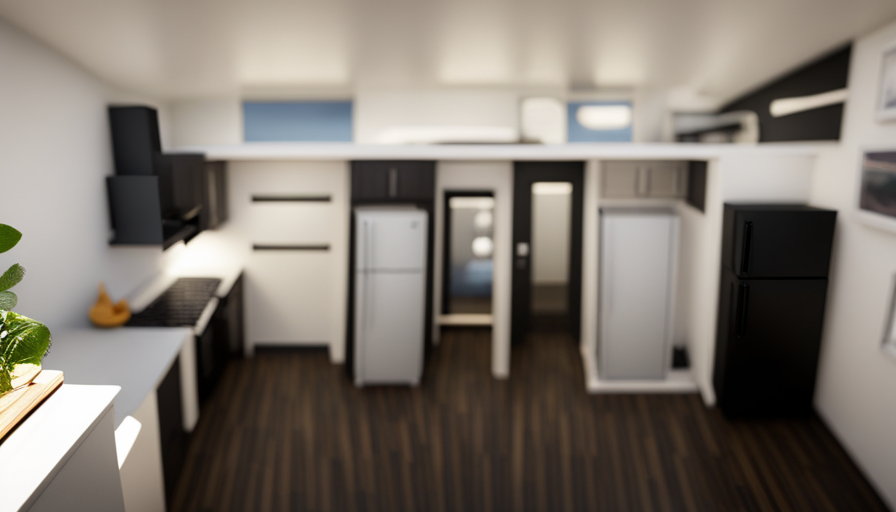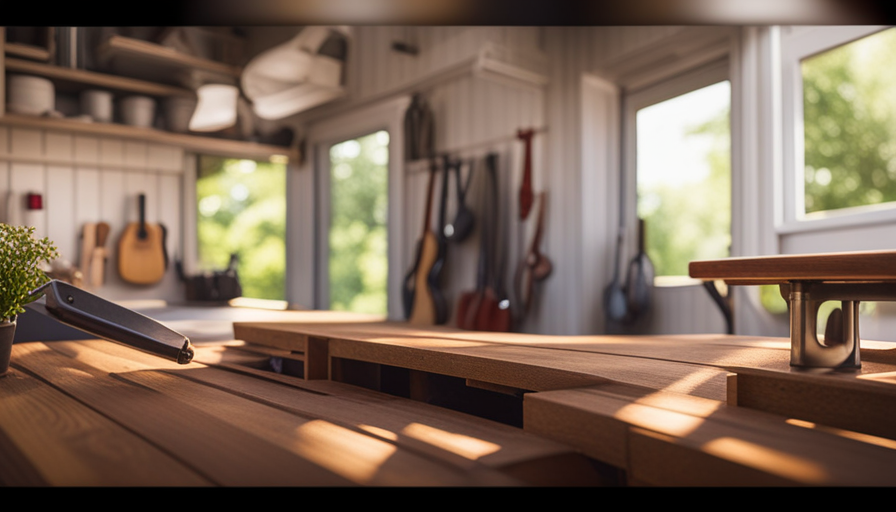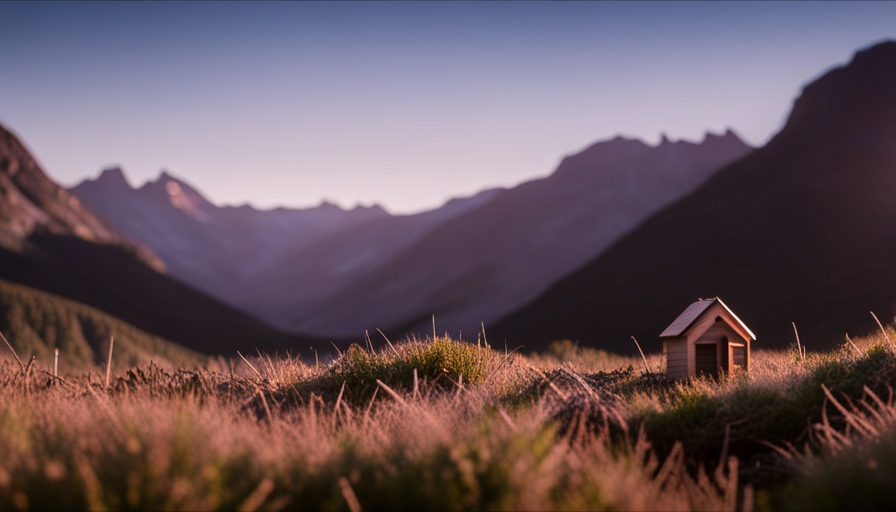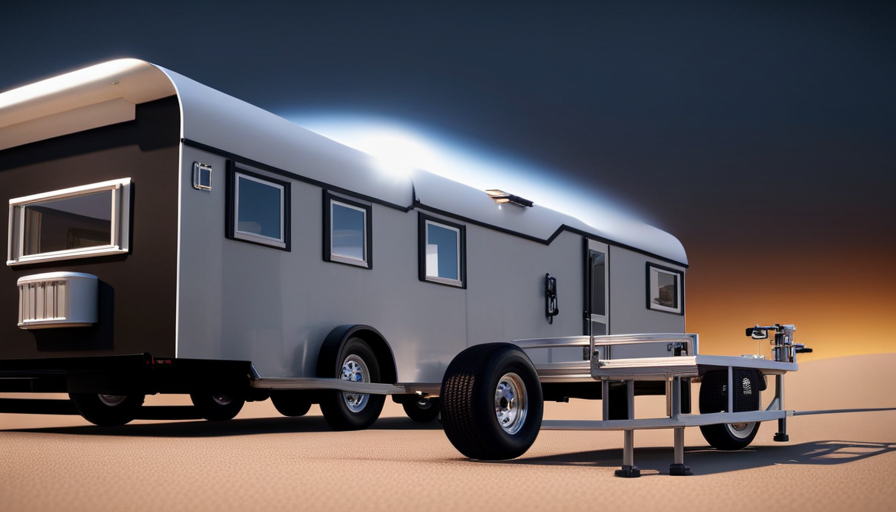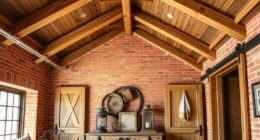Tiny homes are becoming increasingly popular among those who are curious and challenging traditional notions of homeownership. However, what exactly is the size of a tiny house that falls within the 1000 square feet threshold?
In this article, I will delve into the intricate details of these diminutive dwellings, exploring their layout, design, and space efficiency. With a first-person perspective, let me take you on a journey through the innovative world of tiny houses.
Prepare to be enthralled by the functional and ingenious storage solutions, the creation of multi-purpose areas, and the incorporation of natural light and outdoor living spaces. As we explore the benefits and advantages of living in a 1000 square feet tiny house, you’ll discover why these pint-sized abodes are capturing the hearts and minds of individuals seeking a simpler and more sustainable way of life.
So, fasten your seatbelt and let’s embark on this adventure into the big world of tiny houses!
Key Takeaways
- Tiny houses are a popular trend that challenges conventional homeownership by offering sustainable and eco-friendly living spaces.
- Despite their small size of around 1000 square feet, tiny houses provide financial savings and affordability, as well as simplified and clutter-free living environments.
- Space efficiency is crucial in tiny houses, achieved through open floor plans, strategic furniture placement, and the utilization of vertical space.
- Incorporating natural light and outdoor living spaces in tiny houses not only expands usable area but also promotes relaxation, entertainment, and a harmonious living environment.
Understanding the Concept of Tiny Houses
Do you ever wonder what it would be like to live in a tiny house, where every inch counts and creativity is key? Tiny houses have gained popularity in recent years due to their sustainability and eco-friendly features. These compact homes are designed to minimize their environmental impact, using renewable materials and energy-efficient systems.
Not only are they good for the planet, but they also offer financial savings and affordability. With lower construction and maintenance costs, tiny houses provide an affordable housing option for those looking to downsize or reduce their expenses.
Now that we understand the concept of tiny houses and their benefits, let’s delve into the layout and design of a 1000 square feet tiny house.
Layout and Design of a 1000 Square Feet Tiny House
The layout and design of a 1000 sq ft tiny house can be surprisingly spacious and efficient. With careful layout optimization and strategic furniture placement, every square foot can be utilized effectively.
One key aspect of maximizing space efficiency in a tiny house is to create an open floor plan that allows for seamless flow between different areas. This can be achieved by using multipurpose furniture and incorporating built-in storage solutions. For example, a dining table can double as a workspace, and stairs can contain hidden drawers for additional storage.
Additionally, utilizing vertical space is crucial in a tiny house. Installing loft beds, floating shelves, and utilizing wall-mounted storage can help free up valuable floor space.
By combining smart layout choices and strategic furniture placement, a 1000 sq ft tiny house can feel surprisingly spacious and functional.
Maximizing Space Efficiency in a Tiny House
Create an open floor plan in your 1000 sq ft tiny home to maximize space efficiency and optimize flow between different areas. This layout choice allows for a seamless transition from one space to another, making your tiny house feel more spacious and open.
To further enhance space efficiency, consider incorporating space-saving furniture, such as foldable tables and chairs, Murphy beds, and built-in storage solutions. These clever pieces of furniture can be easily tucked away when not in use, freeing up valuable floor space.
Additionally, make use of creative vertical storage options, such as wall-mounted shelves, hanging baskets, and overhead storage compartments. These solutions help to maximize the use of vertical space, keeping your belongings organized and easily accessible.
Transitioning into the subsequent section about functional and innovative storage solutions, these space-saving techniques will help you make the most of your tiny home’s limited square footage.
Functional and Innovative Storage Solutions
Consider utilizing a hanging shoe organizer on the back of your bedroom door to maximize storage space for small items like socks, accessories, and toiletries. For example, imagine how convenient it would be to have all your daily essentials neatly stored and easily accessible in a compact and functional way. To further optimize storage in a tiny house, incorporating innovative storage solutions and space-saving furniture is key. One such solution is the use of multi-functional furniture pieces, like a coffee table that doubles as a storage ottoman or a sofa with built-in drawers. Additionally, utilizing vertical space is crucial. Install floating shelves or wall-mounted cabinets to keep items off the floor and create an illusion of spaciousness. Another clever idea is to use furniture with hidden storage compartments, such as a bed with built-in drawers underneath. By implementing these innovative storage solutions and space-saving furniture, you can make the most of your 1000 square feet tiny house and create a clutter-free and organized living space. Transitioning into the next section, let’s explore the concept of creating multi-purpose areas in a small space.
Creating Multi-Purpose Areas in a Small Space
Imagine how enjoyable it would be to have a living room that seamlessly transforms into a home office, allowing you to easily switch between work and relaxation in your compact space. With multi-functional furniture and smart design solutions, creating multi-purpose areas in a small space isn’t just possible—it’s highly efficient.
Here are three ways to achieve this:
-
Utilize convertible furniture: Invest in pieces that can serve multiple functions, such as a sofa that can transform into a bed or a coffee table with built-in storage.
-
Optimize vertical space: Maximize storage by utilizing wall-mounted shelves, hanging organizers, and overhead storage units. This will help keep your belongings organized and make the most of your limited square footage.
-
Create designated zones: Use rugs, room dividers, or different lighting to visually separate different areas within your tiny house. This will create distinct spaces for different activities, making the most of your available space.
By incorporating these multi-functional and space-saving strategies, you can make the most of your tiny house’s square footage.
In the next section, we’ll explore how incorporating natural light and outdoor living spaces can enhance your overall living experience without compromising space.
Incorporating Natural Light and Outdoor Living Spaces
Step outside and let the warm embrace of natural light and the refreshing breeze of outdoor living spaces transport you to a world of serenity and tranquility. In a 1000 square feet tiny house, incorporating outdoor gardening and sustainable materials can enhance the overall living experience.
By strategically placing windows and skylights, natural light floods the space, creating an open and airy atmosphere. This not only reduces the need for artificial lighting during the day but also provides a connection to the surrounding environment.
Outdoor living spaces, such as a small patio or deck, expand the usable area and allow for relaxation and entertainment. Additionally, incorporating sustainable materials, such as reclaimed wood or eco-friendly insulation, promotes an environmentally conscious lifestyle. These elements contribute to a harmonious living space that seamlessly blends outdoor and indoor living.
Transitioning to the next section, living in a 1000 square feet tiny house offers numerous benefits and advantages.
Benefits and Advantages of Living in a 1000 Square Feet Tiny House
After exploring the importance of incorporating natural light and outdoor living spaces in a tiny house, let’s now delve into the benefits and advantages of living in a 1000 square feet tiny house. As someone who’s experienced the minimalistic lifestyle firsthand, I can attest to the numerous advantages it offers.
Firstly, a 1000 square feet tiny house provides a cost-effective housing solution, allowing individuals to reduce their expenses significantly.
Secondly, the compact size encourages a simplified and clutter-free living environment, promoting a sense of tranquility and mindfulness.
Additionally, the smaller footprint of a tiny house has a lower impact on the environment, making it an eco-friendly choice.
Moreover, the reduced maintenance and cleaning requirements make it easier to manage and keep tidy.
Lastly, the limited space fosters creativity and innovative design solutions, resulting in a personalized and unique living space.
Benefits of Living in a 1000 Square Feet Tiny House:
- Cost-effective housing solution
- Simplified and clutter-free living environment
- Lower environmental impact
- Reduced maintenance and cleaning requirements
- Opportunities for creative and innovative design solutions
Frequently Asked Questions
Are tiny houses only suitable for single individuals or can they accommodate families as well?
Tiny houses are not just suitable for single individuals; they can also accommodate families. Despite their small size, tiny houses offer several advantages for families, including affordability.
Living in a tiny house allows families to save money on utility bills, maintenance costs, and overall living expenses. Additionally, tiny houses foster a sense of togetherness and promote a minimalist lifestyle, encouraging families to prioritize quality time and experiences over material possessions.
Is it possible to have a traditional kitchen with full-sized appliances in a 1000 square feet tiny house?
Yes, it’s possible to have a traditional kitchen with full-sized appliances in a 1000 square feet tiny house. To achieve this, space-saving kitchen appliances can be utilized. These appliances are designed to be compact yet functional, allowing for efficient use of space without compromising on functionality.
Additionally, traditional kitchen design elements can be incorporated, such as ample storage, countertop space, and a suitable layout to ensure a fully operational and aesthetically pleasing kitchen within the limited square footage.
How do tiny houses handle waste disposal, such as sewage and garbage?
When it comes to waste management in tiny houses, especially those designed for off-grid living, I find it fascinating how these compact spaces handle sewage and garbage.
The ingenious solutions employed include composting toilets, which convert human waste into valuable fertilizer, and compact waste disposal systems that minimize the need for frequent garbage disposal.
It’s amazing to see how these sustainable practices are integrated into the design of tiny houses, making them self-sufficient and environmentally friendly.
Can a tiny house of 1000 square feet be built on wheels for mobility?
Yes, a tiny house of 1000 square feet can be built on wheels for mobility. However, building codes need to be considered to ensure compliance with regulations, such as weight restrictions and safety standards. Incorporating mobility into the design may have cost implications, as special materials and engineering expertise may be required. It’s important to consult local authorities and professionals to ensure that the mobile tiny house meets all necessary requirements.
Are there any restrictions or regulations regarding the construction and placement of tiny houses in different areas?
When it comes to the construction and placement of tiny houses, there are various restrictions and regulations that differ across different areas. These rules are in place to ensure safety, zoning compliance, and community standards.
For example, in some areas, there may be restrictions on the size and height of the tiny house, requirements for plumbing and electrical systems, and limitations on where the house can be placed.
It’s important to research and comply with these regulations to avoid any legal issues during the construction and placement process.
Conclusion
In conclusion, living in a 1000 square feet tiny house offers a unique and innovative way of maximizing space efficiency. With functional storage solutions and multi-purpose areas, every inch of the house is utilized effectively.
The incorporation of natural light and outdoor living spaces creates a sense of openness and connection with nature. Embracing the minimalist lifestyle, living in a tiny house allows for a simpler and more sustainable way of living. It’s like stepping into a cozy and efficient world where every nook and cranny has a purpose.
Hi, I’m Emma. I’m the Editor in Chief of Tiny House 43, a blog all about tiny houses. While tree houses are often associated with childhood, they can be the perfect adult retreat. They offer a cozy space to relax and unwind, surrounded by nature. And since they’re typically built on stilts or raised platforms, they offer stunning views that traditional homes simply can’t match. If you’re looking for a unique and romantic getaway, a tree house tiny house might just be the perfect option.
